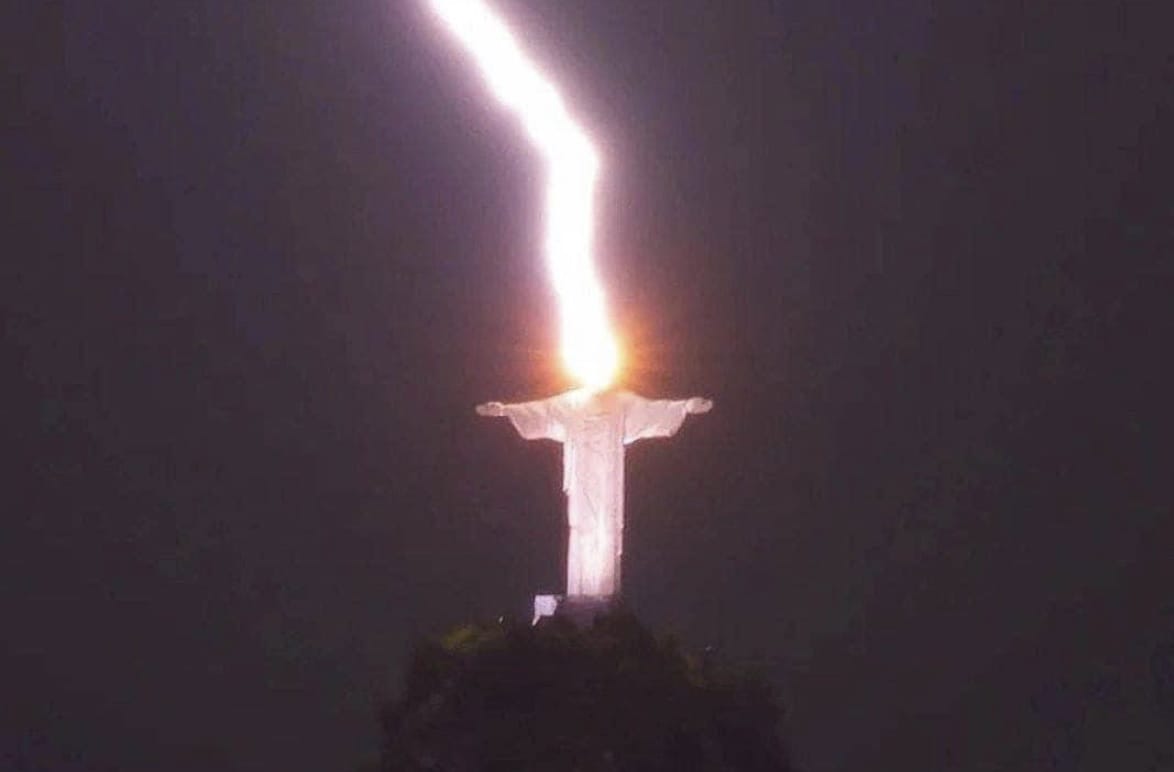The Statue of Liberty: a beacon of freedom, a symbol of democracy, and… a giant lightning rod? It’s true! This iconic landmark endures an estimated 600 lightning strikes every year. But how does Lady Liberty withstand nature’s fury, and what’s the story behind those stunning viral photos of her being struck? Let’s delve into the electrifying world of lightning and the Statue of Liberty.
Why Lady Liberty is a Lightning Magnet
Standing tall on Liberty Island in New York Harbor, the Statue of Liberty is a prime target for lightning. Her height, copper composition, and isolated location make her a magnet for electrical discharges.
Think of it this way: during a thunderstorm, the atmosphere is like a giant battery, with positive charges building up in the clouds and negative charges on the ground. When the voltage difference becomes too great, zap – lightning strikes! And the tallest, most conductive object around – in this case, the Statue of Liberty – is the most likely path for that electricity to flow to the ground.
A History of Shocks: How Many Times Has Lightning Struck?
While no one knows the exact number of times the Statue of Liberty has been struck by lightning, estimates suggest it could be as high as 600 strikes per year. This frequency is due to her location in a highly active thunderstorm region. Fortunately, she’s not defenseless.
Safeguarding an Icon: The Science of Lightning Protection
In the 1930s, engineers installed a sophisticated lightning protection system on the Statue of Liberty. This system acts like a shield, safely redirecting the enormous electrical current from a lightning strike into the ground.
Here’s how it works:
- Lightning Rods: These pointed metal rods, placed strategically on the statue’s torch and crown, act as lightning attractors.
- Conducting Paths: A network of copper cables connects the lightning rods to a grounding system within the statue’s pedestal.
- Grounding System: This system safely dissipates the electrical energy from the lightning strike into the earth.
Capturing the Moment: The Viral Photos That Shocked the World
Photographer Dan Martland’s incredible images of lightning seemingly striking the Statue of Liberty’s torch captivated the world in April 2024. His photos went viral, sparking awe and raising questions about the statue’s safety.
Martland used a combination of weather tracking, a lightning trigger, and a two-camera system to capture the fleeting moment. While the photos created the illusion of a direct hit, the lightning likely struck very close to the statue. The angle of the photos and the way light reflects off the statue’s copper surface contributed to this dramatic effect.
The Allure of Lightning Photography: Risks and Ethical Considerations
Martland’s images sparked a debate about the risks photographers take in pursuit of the perfect shot. Chasing storms and lightning can be incredibly dangerous, and prioritizing a photograph over personal safety is never worth the risk.
The Enduring Symbol: More Than Just Metal and Stone
The Statue of Liberty’s ability to withstand countless lightning strikes is a testament to the ingenuity of its design and the dedication of those who maintain it. But beyond its physical resilience, the Statue of Liberty embodies the enduring spirit of freedom – a spirit that even the most powerful forces of nature can’t extinguish.
- Jesus Bible: Discover Jesus’s Story Throughout Scripture - April 27, 2025
- Don Luis: Unraveling the 16th-Century Virginia Mystery - April 27, 2025
- Captain J’s Kauai Tours: Unforgettable Na Pali Coast Adventures - April 27, 2025
















